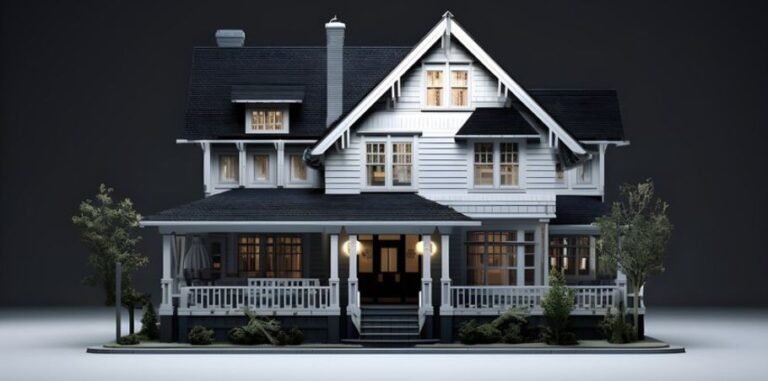Flooring is one of the most significant aspects of any space whether it’s your home, office, or industrial area. But have you considered giving your floors a fresh look with floor paint? This simple yet effective solution can drastically change the appearance and functionality of your floors. If you’re looking to revamp your floors or simply protect them, floor paint is the way to go. In this article, we’ll dive deep into everything you need to know about floor paint, including its types, benefits, and how to apply it correctly.
What is Floor Paint?
Floor paint is a specially formulated paint that is designed to adhere to floors and provide both an aesthetic finish and a layer of protection. It’s different from regular wall paint because it’s created to withstand heavy foot traffic, moisture, and even extreme temperatures in some cases.
Whether you’re painting concrete, wood, or tiles, floor paint is designed to offer long-lasting durability. It’s available in a wide variety of colors and finishes, giving you the flexibility to customize your space. It’s also a practical choice for areas that endure wear and tear, such as garages, basements, warehouses, and even outdoor patios.
Why Choose Floor Paint?
Floor paint is more than just a cosmetic choice. There are several reasons why people opt to paint their floors, and we’ll break down the most common advantages below:
Durability and Protection
Floor paint provides a strong, protective layer over your floors. It helps protect against scratches, stains, and even spills, making it perfect for high-traffic areas or spaces where liquids are frequently spilled, like kitchens or garages.
Aesthetic Appeal
A fresh coat of floor paint can give your space a modern, clean, and polished look. Whether you’re going for a glossy finish for a sleek and sophisticated look, or matte for a more rustic vibe, floor paint can dramatically change the ambiance of a room.
Cost-Effective Renovation
If you’re looking to renovate without breaking the bank, floor paint is an affordable option. Replacing flooring can be expensive, especially with high-quality materials like hardwood or tile. Painting your existing floors allows you to achieve a similar transformation at a fraction of the cost.
Easy to Maintain
Painted floors are relatively easy to clean and maintain. A quick sweep and mop are often all it takes to keep them looking great. Additionally, many floor paints are resistant to dirt and stains, making them a more hygienic choice for busy areas.
Eco-Friendly Options
There are eco-friendly floor paints available that are free of harmful chemicals and volatile organic compounds (VOCs). These options are ideal for those looking to make a sustainable choice for their home or business.
Types of Floor Paint
When choosing floor paint, it’s important to consider the type of surface you’re painting, the conditions the floor will face, and your desired finish. Here are some of the most popular types of floor paints available:
Epoxy Floor Paint: Epoxy floor paint is one of the most durable types of floor paint. It’s commonly used in commercial and industrial settings because it provides a hard, non-porous surface that can withstand heavy foot traffic, machinery, and chemicals. Epoxy is highly resistant to stains, oils, and even abrasion, making it a perfect choice for garages, factories, and workshops.
Acrylic Floor Paint: Acrylic floor paint is water-based and is easier to apply compared to other types of floor paints. It is ideal for residential areas and can be used on concrete, wood, or tile floors. It’s also quick-drying and comes in a wide range of colors. Acrylic paints are often used in garages, basements, and patios.
Polyurethane Floor Paint: Polyurethane paint is a popular choice for both indoor and outdoor applications. It offers excellent resistance to wear, moisture, and chemical spills, making it a great option for kitchens, bathrooms, and outdoor decks. Polyurethane floor paint also gives a high-gloss finish that is highly attractive.
Oil-Based Floor Paint: Oil-based paints are durable and offer a smooth finish. They are best suited for indoor spaces, such as living rooms or bedrooms, where the floor is not exposed to heavy traffic or harsh conditions. These paints tend to take longer to dry and emit a stronger odor, but they create a hard, shiny finish.
Concrete Stain: If you’re looking for something a little different, concrete stains can offer a unique, translucent finish. Unlike traditional paint, stains penetrate the concrete, providing a natural look. These are typically used for decorative purposes, such as in living spaces, basements, or patios.
Preparing Your Floors for Painting
Before applying any floor paint, proper preparation is crucial to ensure a smooth and durable finish. Here’s how you can prepare your floor:
Clean the Surface
Start by thoroughly cleaning the floor to remove any dirt, debris, or oils that could interfere with paint adhesion. Use a broom or vacuum cleaner to remove large particles, then mop the floor to get rid of any stubborn dirt or grease.
Repair Any Damages
If your floor has any cracks, chips, or holes, repair them with a suitable filler. Use a floor patching compound for concrete floors or wood fillers for wooden floors. Allow the filler to dry completely before proceeding.
Sand the Surface
For better paint adhesion, lightly sand the surface of your floor. This will create a rough texture for the paint to grip onto. Be sure to remove any dust from sanding before moving to the next step.
Apply Primer
Depending on the type of paint you’re using, you may need to apply a primer. Priming helps seal the floor and provides an even surface for the paint to adhere to. Choose a primer that’s compatible with your paint type for the best results.
Apply the Paint
Once your primer is dry, it’s time to start painting. Use a roller or paintbrush to apply the floor paint in thin, even coats. Be sure to allow each coat to dry before applying the next one. For a durable finish, apply at least two coats of paint.
Caring for Your Painted Floor
After your floor paint has dried and fully cured, maintaining it is crucial for longevity. Here are some tips to help you care for your painted floors:
- Regular Cleaning: Sweep or vacuum your painted floor regularly to remove dirt and debris. This will prevent scratches and preserve the finish. You can also use a damp mop with mild soap to clean the floor.
- Avoid Harsh Chemicals: Avoid using harsh cleaning chemicals that could damage the paint. Stick to mild cleaners or soap solutions for the best results.
- Reapply Paint as Needed: Over time, the floor paint may begin to show signs of wear and tear. If you notice any chipped or faded areas, consider applying a fresh coat of paint to restore the floor’s appearance.
FAQs About Floor Paint
How long does floor paint last?
Floor paint can last anywhere from 2 to 10 years, depending on the type of paint used, the amount of foot traffic, and how well the floor is maintained.
Can I paint my floor over tiles?
Yes, you can paint over tiles, but it’s important to properly prepare the surface. Clean the tiles, repair any damage, and use a suitable primer before applying the paint.
Is floor paint waterproof?
Certain types of floor paint, such as epoxy or polyurethane, are water-resistant. However, it’s important to ensure proper application to achieve a completely waterproof finish.
Can I use floor paint in high-traffic areas?
Yes, some types of floor paint, such as epoxy, are designed to withstand heavy traffic and are perfect for high-traffic areas like garages, warehouses, and commercial spaces.
How do I fix mistakes while painting my floors?
If you make a mistake during application, wait for the paint to dry and sand the area lightly before touching up with another coat. Always follow the manufacturer’s instructions for proper correction.
Conclusion
Floor paint is an excellent way to refresh and protect your floors without the expense of replacing them. Whether you choose epoxy, acrylic, or polyurethane paint, there’s a solution that will meet your needs. With the right preparation and care, painted floors can last for years and continue to look great. Plus, they offer a range of benefits, from improved durability to a cleaner, more aesthetically pleasing space.
Latest Post!
- What users are saying about RemixPapa MSW: A comprehensive review
- BPT Navigating Trauma: Understanding the Journey
- Which Digital Marketing Channels Deliver the Best ROI in 2025?
- Understanding the Significance of 3381012544: What It Means and Why It Matters
- Search box optimization byrankstar: A Deep Dive into Effective Strategies for Improved User Experience and SEO
- What is m0therearf and why does it matter in digital culture















